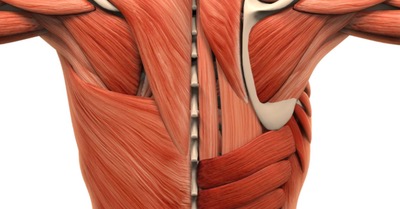Deep Tissue Massage
Deep Tissue Massage Therapy
Many forms of massage are geared towards relaxing the muscles while reducing tension and tightness in the superficial muscle groups. A deep tissue massage is different because it is aimed at treating the deep tissue and myofascial tissue that lies underneath these muscles. In a regular massage, the massage therapist may use short hand strokes and mild to moderate pressure. In a deep tissue massage, the pressure applied is considerable, and the strokes used by the massage therapist are very slow and deliberate.
Some people believe that a deep tissue massage and a Swedish massage are the same thing, yet this is not true. A Swedish massage is generally quite similar to a typical massage which incorporates deep pressure. A deep tissue massage, however, is specifically geared to dissolve knots in the tissue and fascia as well as to break up the presence of any scar tissue present in the area being treated.
While a number of people can benefit from deep tissue massage therapy, it is particularly useful for treating chronic discomfort, such as stiffness in the neck, continual shoulder pain, sciatica and/or back pain. Oftentimes, the pain felt in these areas is the result of knots or adhesions which have formed down deep in the body’s tissue. When the tissue becomes rigid and knots itself up, it hinders blood flow and circulation, along with possibly pinching nerves and causing other physical discomfort.
Get In Touch
SPORTS INJURY REHABILITATION Weston, FL
A deep tissue massage involves two primary techniques. These are the hallmarks of a deep tissue massage, and incorporates what sets the practice apart from other forms of massage therapy.
- Stripping: This means the massage therapist uses their thumbs, elbows or knuckles to apply strong, slow pressure down the entire length of the deep tissue.
- Friction: Rather than applying strong, slow pressure along the length of deep tissue groups, friction involves applying the same technique across the width of the area.
Who Can Benefit from Deep Tissue Massage?
Deep tissue massage can be valuable for treating a wide variety of ailments. Patients who are involved in a car accident, fall or other trauma may suffer from a condition known as whiplash. This means that the head and neck area are involved in some sort of incident which results in sudden, fast forward movement followed by an immediate fast movement backwards. This can result in considerable discomfort in the neck area. Deep tissue massage can benefit by focusing solely upon the deep tissue present within the neck area, relieving any spots of tension or knotting that may remain.
Deep tissue massages are highly beneficial for individuals with hypertension. In fact, studies have shown that even just one deep tissue massage can result in lowered blood pressure levels.
Deep tissue massage releases serotonin, which is a chemical in the brain that is responsible for good feelings. This increase in serotonin can be helpful for patients who suffer from a variety of mental disorders, such as anxiety, depression or obsessive-compulsive disorder.
Other conditions, such as sciatica, chronic pain in the lower back, constant charley horses’ and/or poor posture can be effectively treated via deep tissue massage. The process can also be quite beneficial for treating muscle fatigue and knotting due to repetitive movement, such as carpal tunnel syndrome or tennis elbow.
Some patients are hesitant to undergo a deep tissue massage as they are worried about the level of discomfort involved. When most people think about getting a massage, they view it as a pleasurable, even pampering experience, however the degree of pressure involved in a deep tissue massage can cause weariness. If an area is already tender and sensitive, it does not make sense to most patients to apply deep pressure to the affected area.
A deep tissue massage may involve some degree of discomfort, particularly when the massage therapist works directly on knots and adhesions in the body. This discomfort, however, is almost always tolerable, and results in a release in tension in the body’s deep tissue and fascia that provides pain relief in the long term. In any case, it is absolutely vital that the person undergoing the massage maintains constant, clear communication with the massage therapist. If the pressure involved results in pain, the massage therapist should be immediately notified so they can adjust their technique.
Generally speaking, there are some basic guidelines and warnings that must be adhered to. Pregnant women should avoid deep tissue massages, as should anyone who has a history of blood clots and/or deep vein thrombosis. Patients who have suffered a trauma resulting in significant bruising, sprained or broken bones as well as open wounds should avoid deep tissue massage as well, as it could exacerbate the injuries already prevalent in these areas.
It is extremely important that anyone who undergoes a deep tissue massage is careful to consume enough water to flush the impurities and lactic acid from the body. Failure to properly hydrate before and after a deep tissue massage can result in soreness and tenderness in the hours following the procedure.


